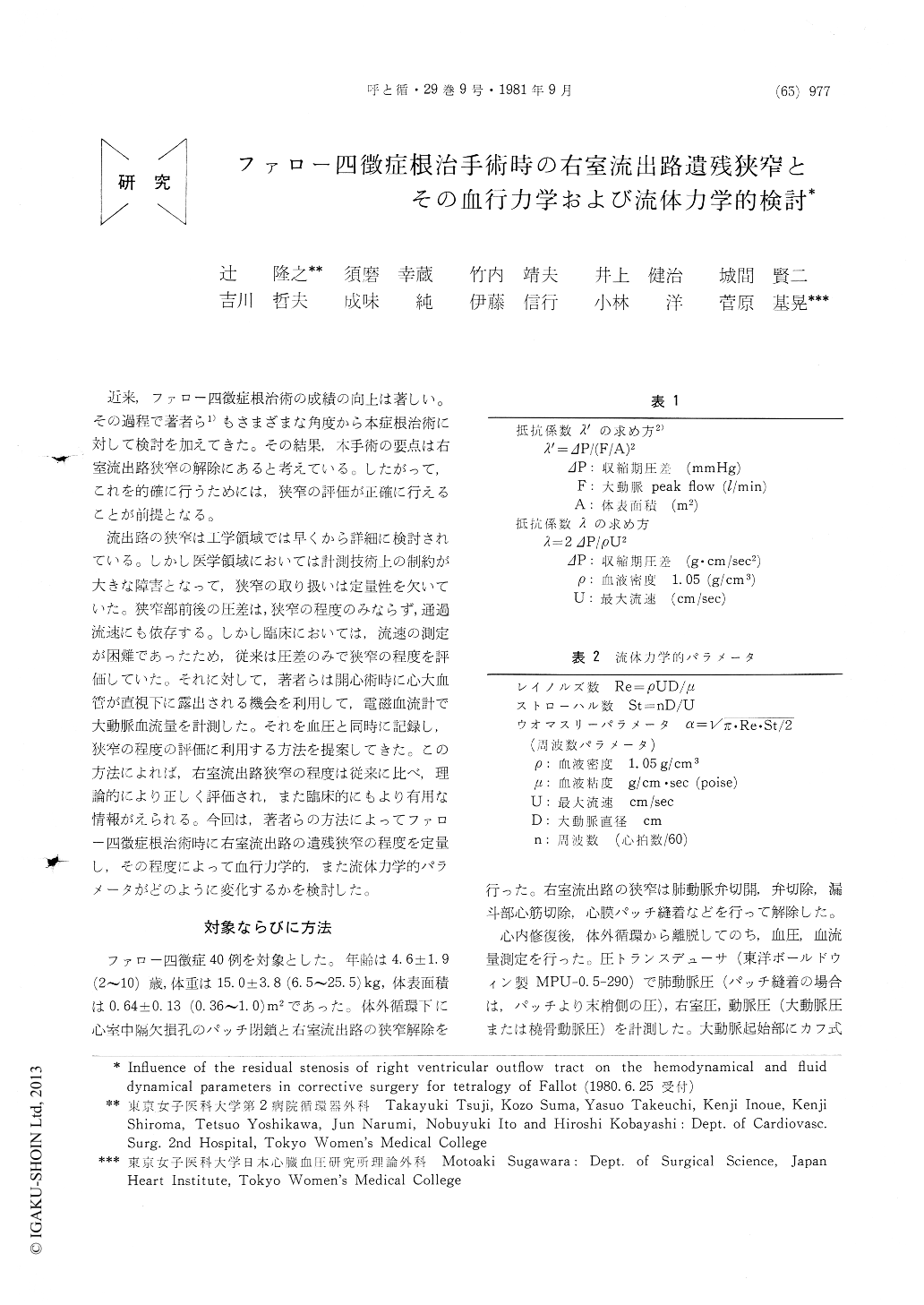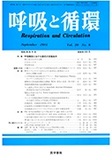Japanese
English
- 有料閲覧
- Abstract 文献概要
- 1ページ目 Look Inside
近来,ファロー四徴症根治術の成績の向上は著しい。その過程で著者ら1)もさまざまな角度から本症根治術に対して検討を加えてきた。その結果,本手術の要点は右室流出路狭窄の解除にあると考えている。したがって,これを的確に行うためには,狭窄の評価が正確に行えることが前提となる。
流出路の狭窄は工学領域では早くから詳細に検討されている。しかし医学領域においては計測技術上の制約が大きな障害となって,狭窄の取り扱いは定量性を欠いていた。狭窄部前後の圧差は,狭窄の程度のみならず,通過流速にも依存する。しかし臨床においては,流速の測定が困難であったため,従来は圧差のみで狭窄の程度を評価していた。それに対して,著者らは開心術時に心大血管が直視下に露出される機会を利用して,電磁血流計で大動脈血流量を計測した。それを血圧と同時に記録し,狭窄の程度の評価に利用する方法を提案してきた。
The influence of the residual stenosis of right ventricular outflow tract on the hemodynamical and fluid dynamical parameters in corrective surgery for tetralogy of Fallot was studied in 40 patients. Aortic flow was measured by an electromagnetic flowmeter and pressures, by pressure transducers after the intracardiac repair. The flow and the pressure were simultaneously measured and recorded. The pressure loss coef-ficient λ was obtained by the relationship between the pressure gradient across the stenosis and the aortic peak velocity which was presumed to be equal to the pulmonary arterial peak velocity. The stenosis was assumed to be orifice-like and was described by the cross-sectional area ratio. The relationship between the pressure loss coef-ficient λ and the cross-sectional area ratio is commonly known for the orifice. The correla-tionship between the cross-sectional area ratio of stenosis in the righ ventricular outflow tract and the hemodynamical, fluid dynamical parameters measured intraoperatively after intracardiac re-pair was studied. The cardiac index (2.4±O.6 l/(min/m2BSA), the stroke volume index (17±5ml/beat/m2BSA), the peak Reynolds number (3500± 1400) and the mean aortic velocity (17±5 cm/sec) showed significantly negative correlationship with the cross-sectional area ratio (66±11%). On the other hand, the modified pressure loss coefficient λ' (0.35±0.25), the peak pressure gradient ΔP (24±16 mmHg), the systolic right ventricular pressure RV (56±17mmHg) and the systolic right to left ventricular pressure ratio RV/LV (0.6±0.21) showed significantly direct correla-tionship. As compared with the cross-sectional area ratio, the modified pressure loss coefficient λ' revealed to be the parameter which can most exactly describe the grade of the residual stenosis. This could be easily calculated during the opera-tion by the equation : ΔP/(F/A)2, where ΔP is the pressure gradient (mmHg), F is the aortic peak flow (l/min) and A is the body surface area (m2). The degree of stenosis may not be properly evaluated by RV/LV, which has been used as the index prognostic of the operative results. The low cardiac output syndrome which was observed sometimes after the corrective surgery for tetralogy of Fallot was thought to be mostly due to the residual stenosis.

Copyright © 1981, Igaku-Shoin Ltd. All rights reserved.


